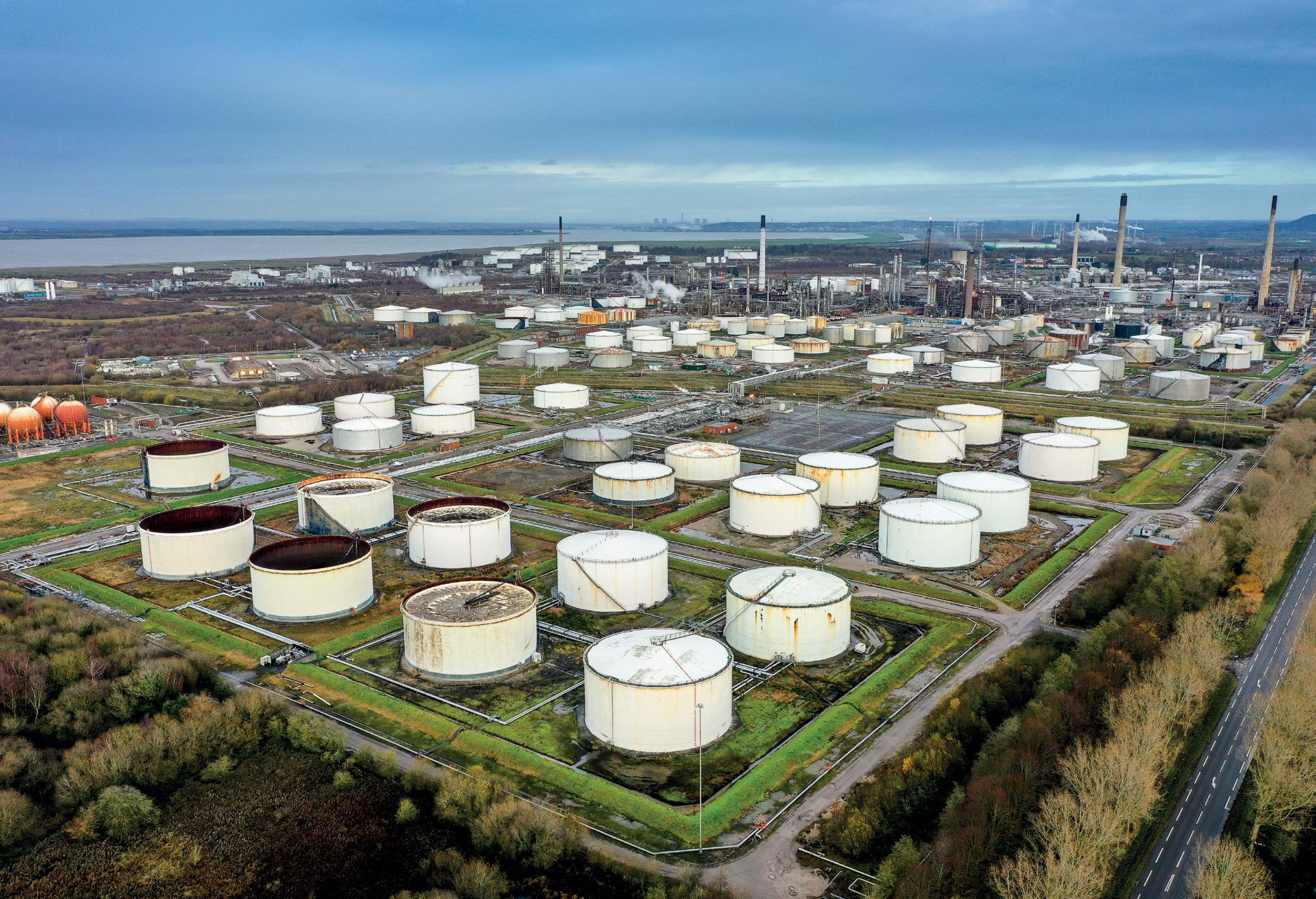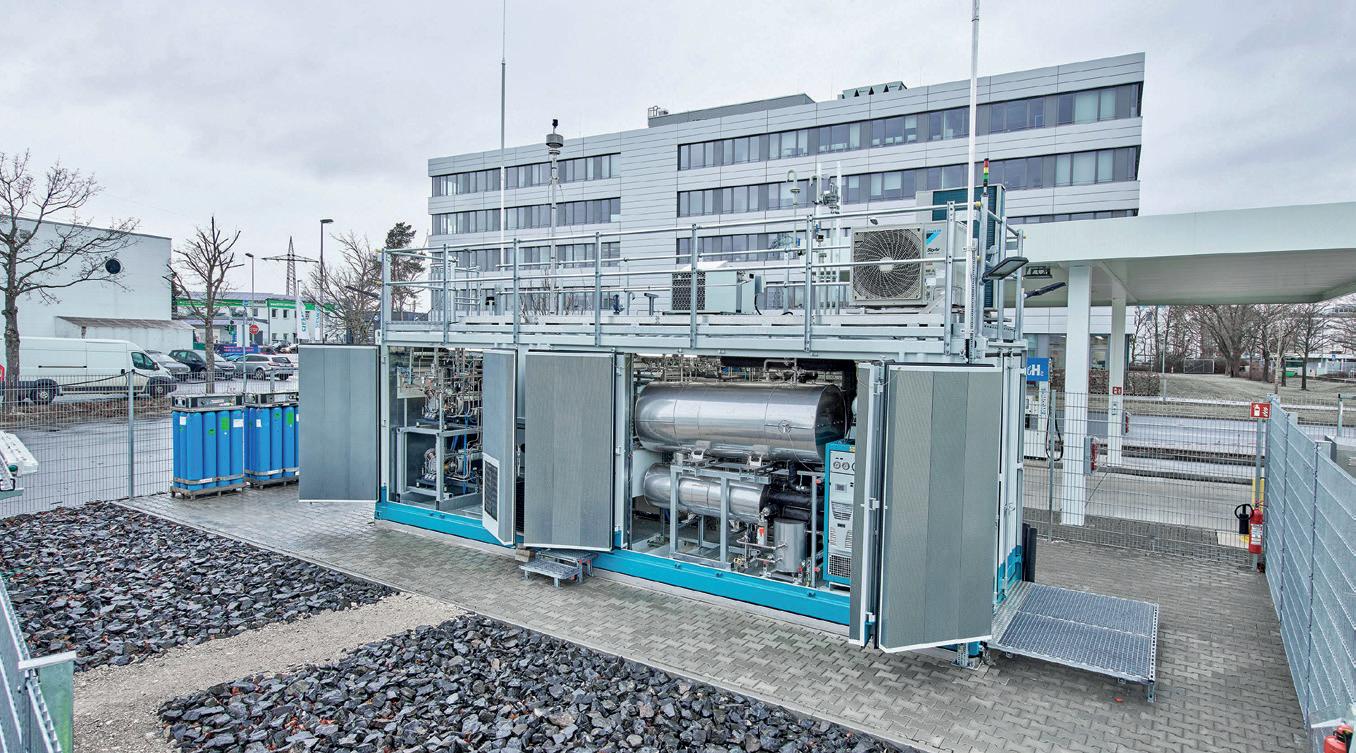
6 minute read
Adapting to changing needs
Simon White, Stanlow Terminals’ lead engineer, looks at how the terminals industry is adapting to growing climate pressures and how Stanlow itself is supporting the drive to net zero
01
Advertisement
AS THE UK moves to embrace the next steps in its net zero campaign, the use of traditional fuels is set to decline, while sustainable alternatives will play a growing role. The pace of change is accelerating as 2030 comes ever closer and the UK strives to hit emissions targets by 2050. Information recently published by the Hague Centre for Strategic Studies (HCSS) covering tank storage in global supply chains has noted that in the UK and Europe, reliance on petrol, diesel and crude oil is already depleting. This reduction is a sign of change across the UK as companies like Stanlow Terminals adapt storage capabilities to open doors to lower carbon fuels and new energies.
BIOFUELS: SUPPLYING TOMORROW’S FUEL SUPPLY
As the UK moves towards more environmentally friendly sources of energy, reliance on biofuels is increasing. Both the government and industry are, for example, investing substantial sums in sustainable aviation fuel (SAF) and we see that in the growing number of production plants being announced, enabling the product to be used on its own or blended into current fuels to help offset fossil fuel usage. The blending target of biofuels into fossil fuels in the EU is 14% up to 2030 and is expected to become even more ambitious as we move beyond that following the revision of the Renewable Energy Directive (RED). Eventually, conventional fuels could be fully replaced by low-carbon biofuel alternatives, for applications like aviation where alternatives such as electric power or hydrogen are technologically challenging. For road transport, petrol and diesel sold to consumers at UK pumps already contain up to 10% and 7% of biocomponents respectively. This is set to increase in the years ahead, providing short-term sustainability goals that will work alongside the longer-term drive to electrify road vehicles. Stanlow recognises this shift in needs on both a national and international level. At the end of 2021, Stanlow Terminals announced a three-year project to see its facilities expand, with the aim of developing the UK’s largest biofuels
storage hub located in the northwest of England. The Stanlow facility is perfectly placed to play this role, offering 300,000 m3 of storage capacity in an advantageous strategic location. The new facilities at Stanlow and Tranmere Terminal, located within the Port of Liverpool, will allow customers to store, blend and distribute biofuels suitable for use in the energy transition as drop-in replacement transport fuels for road, aviation, and marine travel. The customer-led investment will support the growth of SAF and strengthen Stanlow Terminal’s existing ties with Fulcrum’s Northpoint project, which will be creating the fuel from municipal waste for use by airline companies. Stanlow’s expansion doesn’t stop there, as the company invests to become the largest bulk storage and energy infrastructure provider for storage of hydrotreated vegetable oil (HVO), a direct diesel replacement, and a new bioethanol and methanol storage, blending and distribution facility to support the transition towards a renewable energy society.
GETTING SERIOUS ABOUT HYDROGEN ADOPTION
While bio-derived fuels and bioblend components offer effective solutions for some pressing challenges, they still involve burning fuels that release emissions. That’s why, alongside this, development is continuing along with Stanlow Terminal’s sister company, Vertex Hydrogen, into the production of green and blue hydrogen, which provide a completely emissions-free form of energy at the point of use. One of the main methods to create blue hydrogen fuel is to use an intermediary product rich in hydrogen atoms, such as methane, and strip the carbon from it, leaving behind pure hydrogen for distribution to users. The carbon released during the process can be captured for long-term storage. The result is a useable fuel with low carbon emissions, even when the hydrogen itself is burnt. One of the key pieces of the hydrogen adoption puzzle that Stanlow Terminals is addressing is delivering solutions to support the efficient transport of hydrogen to where the energy is needed. This can be achieved in many ways, but one such approach is using hydrogen rich carriers such as methanol and green ammonia. While these have their own particular safety requirements when it comes to transport and storage (particularly in the case of ammonia) new tank, pipeline and transport infrastructure will be constructed to support the safe distribution and storage of these products. It is clear that low-cost, sustainable electricity sources will play a key role in delivering the hydrogen required for the future. Globally, geographies with advantages in the production of electricity from solar, wind, wave and geothermal generation are likely to see significant growth in their hydrogen production capabilities, but these will not always be in the same location as the demand centres for the fuel. Hydrogen carriers are likely to play a critical distribution role in this disparity. Storage and transportation of hydrogen is set to be a key challenge in the UK and around the world as it becomes an increasingly common means of getting energy from power-generation source to point of use. While hydrogen carriers will help, significant upgrading of the infrastructure will be required to support widespread usage across the country. Stanlow Terminals is working to support hydrogen adoption by investing in creating infrastructure through which it can be transported and stored. This includes hydrogen-ready pipelines, road, rail and marine terminals.
INDUSTRY HYDROGEN ADOPTION
As a newer energy solution, there are a number of ongoing attempts to integrate hydrogen fuels into industry. Stanlow Terminals parent company, Essar Oil UK, has commissioned a new furnace for its refinery that will be capable of using hydrogen fuel as its main source of power, proving that clean and renewable fuel can already play a role in further efforts for greener fuel storage and usage.

GOING UNDERGROUND: CARBON CAPTURE AND STORAGE
Carbon capture, utilisation, and storage (CCUS) is considered to be a cornerstone of the decarbonisation of Europe’s energy-intensive industries. CCUS is also essential to produce blue hydrogen, with the leftover carbon needing to be stored for the process to be worthwhile to the environment. This is achieved by siphoning the carbon off and pumping it underground into larger natural reservoirs. As an emerging technology in the fight for net zero transition, CCUS is expected to be deployed at Stanlow on a large scale before 2030. But total global CO2 capture capacity as of 2021 stands at 40 million tonnes. The international Energy Agency has already said it expects this figure to increase to 840 million tonnes by 2030. As efforts to move away from traditional fuel sources increase, increased storage capacity will become an integral factor in the viability of hydrogen and other fuel sources. The continued work is a vote of confidence towards the long-term viability of hydrogen being a serious contender as a zero-emissions fuel source.
THE FUTURE FOR FUEL STORAGE
As the UK and Europe move towards these new types of fuel, it will be the job of storage terminals and connected ports to be the backbone of the move towards a sustainable future. Stanlow Terminals recognises that its optimal positioning for bulk liquid infrastructure and storage facilities as well as its expertise in handling high hazardous and regulated products will mean the northwest of England will play a pivotal role in supporting the UK’s net zero ambitions long into the future. As Stanlow continues to adapt its offerings and storage capabilities for traditional and newer fuel sources, there is confidence that Stanlow Terminals will play a pivotal role in supporting a much-needed bulk liquid evolution across the country.
02
For more information:
www.stanlowterminals.co.uk
01 Stanlow Terminals
02 Simon White, lead engineer at Stanlow
Terminals










